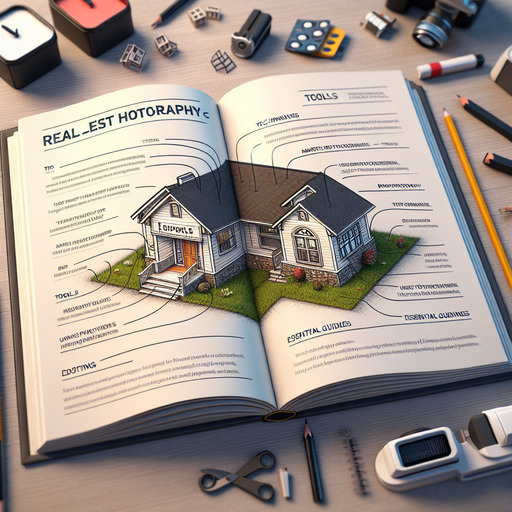
-
Table of Contents
- Mastering Real Estate Photography: Tips, Techniques, and Tools
- Understanding the Importance of Real Estate Photography
- The Impact of Quality Photos on Listings
- Essential Real Estate Photography Tips
- 1. Use the Right Equipment
- 2. Master the Art of Lighting
- 3. Focus on Composition
- Advanced Techniques: Drone Photography and Editing
- Real Estate Drone Photography
- Real Estate Photography Editing
- Pricing Your Real Estate Photography Services
- Conclusion
- Questions and Answers
- 1. What is the best time of day for real estate photography?
- 2. How can I improve my real estate photography skills?
- 3. Is drone photography necessary for real estate listings?
Mastering Real Estate Photography: Tips, Techniques, and Tools
In the competitive world of real estate, first impressions are everything. High-quality real estate photography can make or break a property listing, influencing potential buyers’ decisions before they even step foot inside. Whether you’re a seasoned photographer or a real estate agent looking to enhance your listings, understanding the nuances of real estate photography is crucial. This guide will walk you through essential tips, techniques, and tools to elevate your property photography game.
Understanding the Importance of Real Estate Photography
Real estate photography is more than just snapping pictures of a property. It’s about capturing the essence and potential of a space, enticing buyers to envision themselves living there. According to the National Association of Realtors, 87% of home buyers found photos to be the most useful feature when searching for a home online.
The Impact of Quality Photos on Listings
- Properties with high-quality images sell 32% faster than those with lower-quality visuals.
- Listings with professional photos receive 118% more online views.
- Homes with more photos sell for more money, with an average increase of $3,000 to $11,000.
Essential Real Estate Photography Tips
To capture stunning real estate photos, you need more than just a good camera. Here are some practical tips to get you started:
1. Use the Right Equipment
Investing in the right real estate photography equipment is crucial. A DSLR camera with a wide-angle lens is ideal for capturing spacious interiors. Consider using a tripod for stability and consistency in your shots.
2. Master the Art of Lighting
Lighting can make or break a photo. Natural light is your best friend, so schedule shoots during the day when the light is soft and even. Use additional lighting equipment if necessary to eliminate shadows and highlight key features.
3. Focus on Composition
Composition is key in real estate photography. Use the rule of thirds to create balanced and visually appealing images. Ensure that lines are straight and avoid clutter in your shots to maintain focus on the property.
Advanced Techniques: Drone Photography and Editing
To stand out in the real estate market, consider incorporating advanced techniques like drone photography and professional editing.
Real Estate Drone Photography
Drone photography offers a unique perspective, showcasing the property’s surroundings and providing potential buyers with a comprehensive view. Ensure you comply with local regulations and invest in a quality drone for the best results.
Real Estate Photography Editing
Editing is where your photos come to life. Use software like Adobe Lightroom or Photoshop to enhance colors, adjust lighting, and remove any imperfections. Consistent editing styles can help create a cohesive look across your portfolio.
Pricing Your Real Estate Photography Services
Determining real estate photography pricing can be challenging. Consider factors such as the size of the property, the number of photos required, and any additional services like drone photography or virtual tours. Research local market rates to ensure your pricing is competitive.
Conclusion
Mastering real estate photography requires a blend of technical skills, creativity, and the right equipment. By focusing on quality, composition, and advanced techniques, you can create compelling images that enhance property listings and attract potential buyers. Remember, the right photo can be the difference between a quick sale and a property that lingers on the market.
For more insights on real estate photography, check out this Wikipedia page on real estate photography.
Questions and Answers
1. What is the best time of day for real estate photography?
The best time for real estate photography is during the day when natural light is abundant. Early morning or late afternoon provides soft, even lighting that enhances the property’s features.
2. How can I improve my real estate photography skills?
Practice regularly, study professional real estate photos, and experiment with different techniques and equipment. Consider taking courses or workshops to refine your skills further.
3. Is drone photography necessary for real estate listings?
While not necessary, drone photography can add significant value by providing unique aerial views of the property and its surroundings, making listings more attractive to potential buyers.
If you’re interested in learning more about our real estate photography services or have any questions, please contact us.